25 Types of Pink Flowers To Brighten up Your Garden
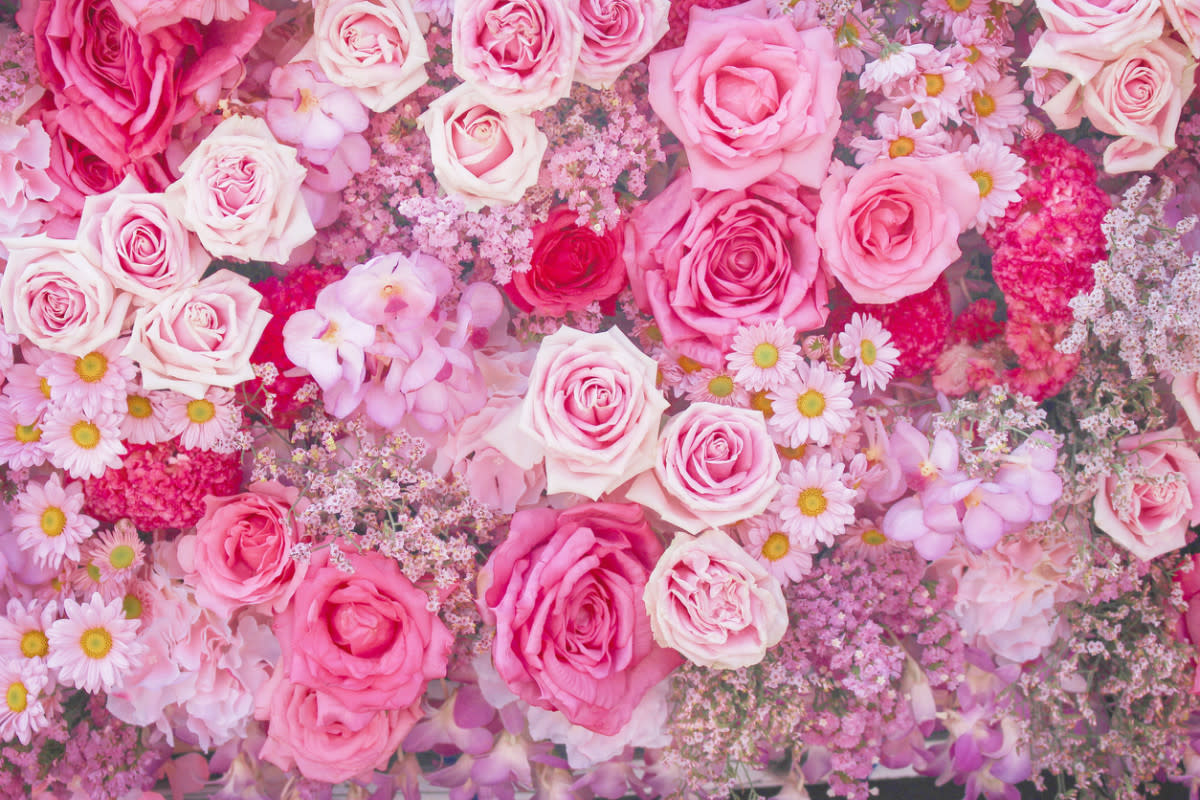
Different types of pink flowers
In the era of the Barbie movie and Taylor Swift, the color pink is certainly popping. Everywhere you go, it seems like people can't get enough of the color pink—from clothing pieces to furniture items, all the way to the plants in their garden. Is pink your new black? Read along if you're looking for 25 types of pink flowers to brighten up your garden.
Ready to make your outdoor space pretty-in-pink? You're in luck. There are tons of pink flowers you can plant, from roses and begonias to peonies and zinnias. Parade gathered all the knowledge on various types of pink flowers from Annette Thurmon, author and founder of Azure Farm, located in Georgia.
Thurmon educated us on the many different types of pink flowers—including some of her favorites. She also told us important things to know about the flowers, like growing size, season and conditions. Keep reading and you'll have pink flowers blooming in your garden in no time.
Related: 25 Gorgeous Flowers and Plants That Attract Hummingbirds
25 Types of Pink Flowers
1. Rose
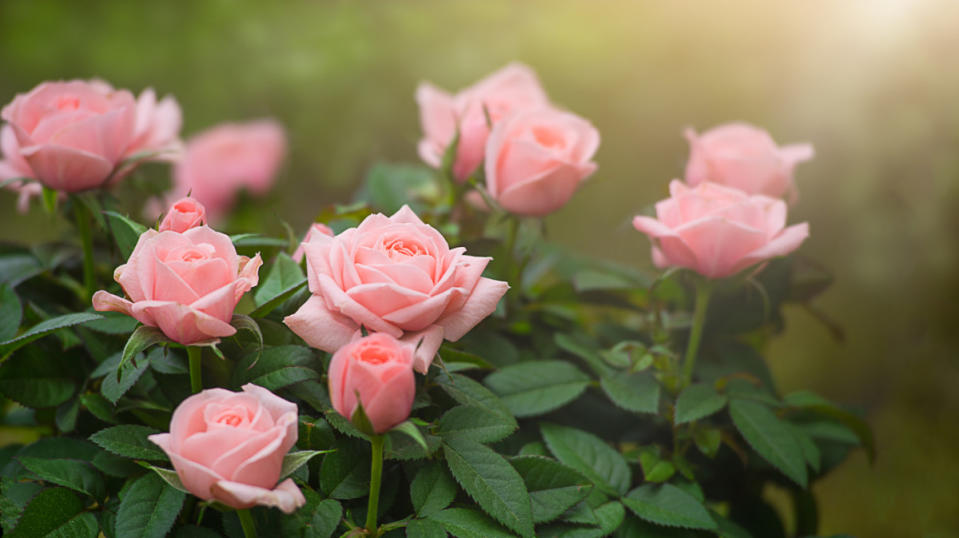
iStock
"Roses are not only a beautiful flower but they can be grown in many ways. From pots to climbing roses their beauty and fragrance makes them a favorite to grow," Thurmon says.
She added that David Austen rose varieties are some of her favorites for color and scent.
Season: Spring to fall
Growing Conditions: Full sun and well-drained soil is ideal. Annual pruning and fertilizing help to promote growth and blooms.
Size: 2-10 feet tall, depending on the variety.
Related: 18 Rose Colors and Their Meanings To Avoid Sending the Wrong Message
2. Zinnia
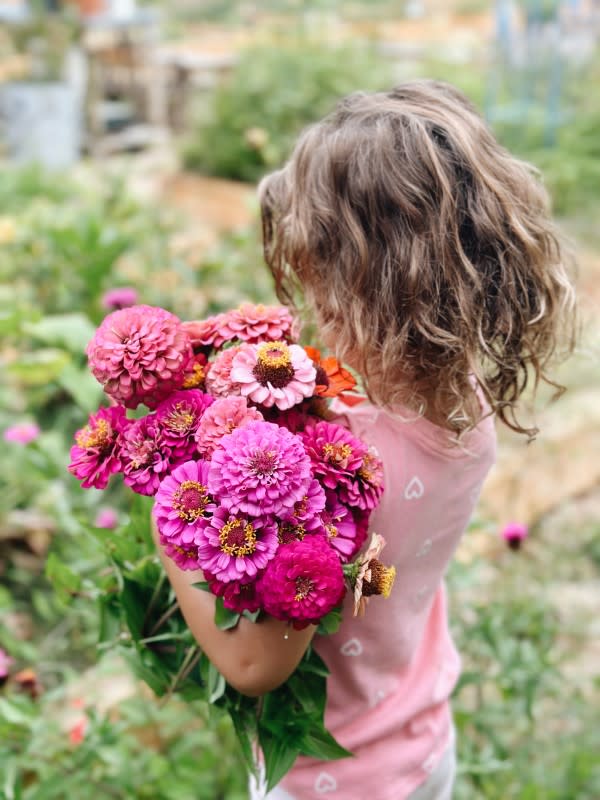
Courtesy Annette Thurmon
Looking for a pink flower that's easy to grow and comes in tons of different shades of pink? Look no further than Zinnias! Thurmon says that if you frequently prune and harvest them, you will get continuous blooms all season. Her favorite varieties are Pink Salmon and Cupcake.
Season: Summer to fall
Growing Conditions: Water at the base to prevent mildew and grow in an area with full sun and well-draining soil.
Size: 1-3 feet tall
3. Cosmo
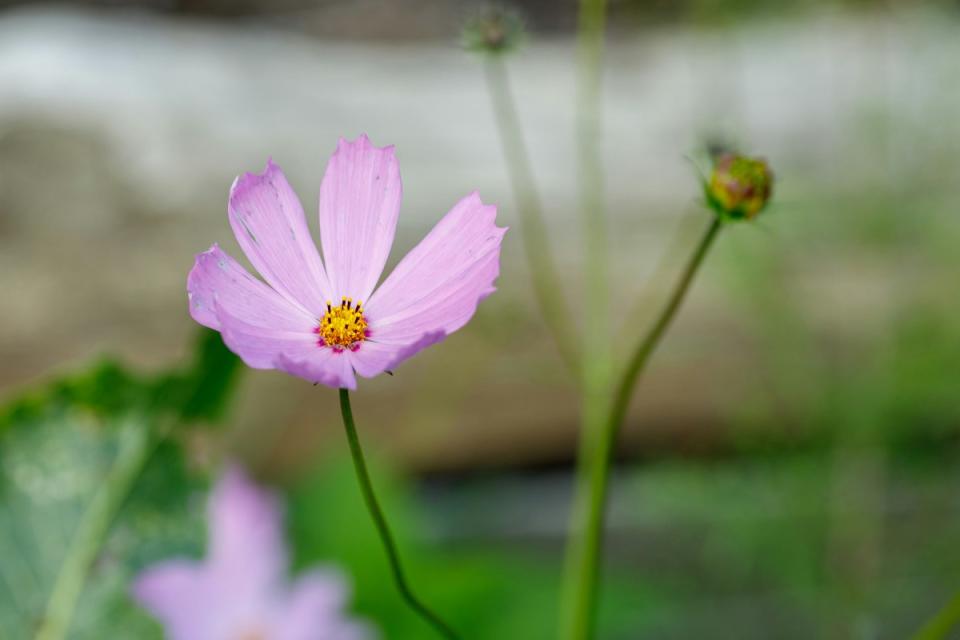
Unsplash
"Cosmos are delicate flowers that float in the breeze. They're very easy to grow and once you plant them, they will re-seed and come back year after year," Thurmon tells Parade. "Some of my favorite varieties are Seashells and Daydream."
Season: Early summer to fall
Growing Conditions: They prefer full sun and well-draining soil.
Size: 1-6 feet tall
4. Dahlia
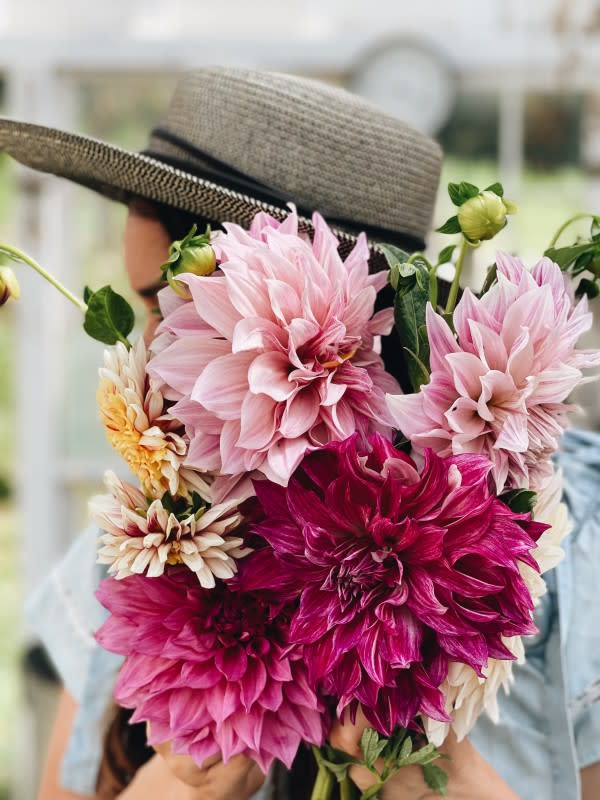
Courtesy Annette Thurmon
According to Thurmon, if you choose to grow any flower from this list, it should be a dahlia. High praise! They come in a wide variety of shapes and hues—and yes, lots of pink! Dahlias begin to bloom in summer and thrive when fall comes around.
Season: Summer to fall
Growing Conditions: They do best in full sun and well-draining soil. However, in very hot climates they do benefit from shade cloth during peak summer months. Water regularly and stake as needed to support the blooms.
Size: 1-5 feet tall
5. Cherry Blossom

Unsplash
Cherry blossoms are delicate, pale pink and white flowers that bloom in a stunning display once a year—in the springtime, typically between March and May. Cherry blossoms grow on trees and symbolize the fleeting beauty of life.
Season: Spring
Growing Conditions: They thrive in full sun with well-drained soil and prefer mild to temperate climates.
Size: Cherry blossoms grow on trees that can reach 20-40 feet tall and 15-30 feet wide.
Related: 40 Best Spring Flowers to Beautify Your Backyard, According to Gardening Experts
6. Orchid
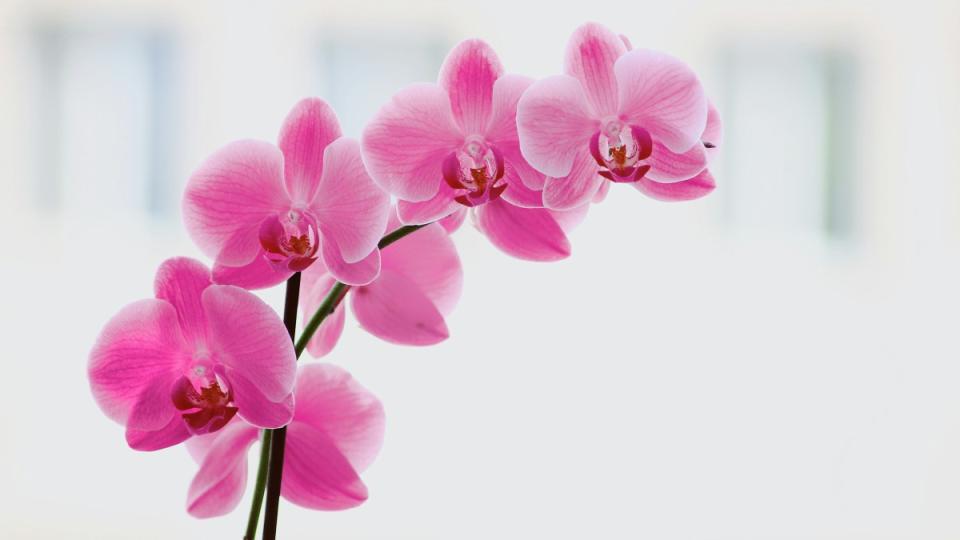
Unsplash
Orchids can be tough to care for, but their beautiful blooms are worth it. They can also grow to be very tall in their most mature state. These exotic, intricate flowers are the perfect pink addition to any home.
Season: Late fall to early spring
Growing Conditions: Orchids flourish in indirect sunlight with high humidity and well-aerated, fast-draining soil.
Size: 1 to 3 feet tall, 6 to 12 inches wide
7. Peony
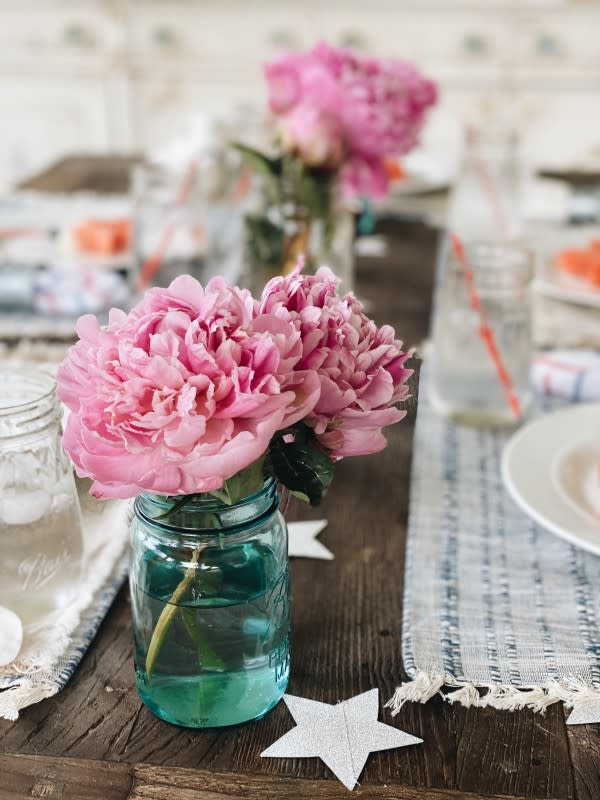
Courtesy Annette Thurmon
"Peonies must be one of my absolute favorites! They're known for their large, showy blooms and come in a variety of colors, including a very soft pink," Thurmon says.
She continues, "Be sure to keep the roots covered with mulch to keep them cool. Provide support for heavy flower heads to prevent them from drooping. Keep them watered and deadhead spent blooms!"
Season: Late spring to early summer
Growing Conditions: Peonies prefer full sun with well-draining soil.
Size: 2-4 feet tall and wide
8. Begonia
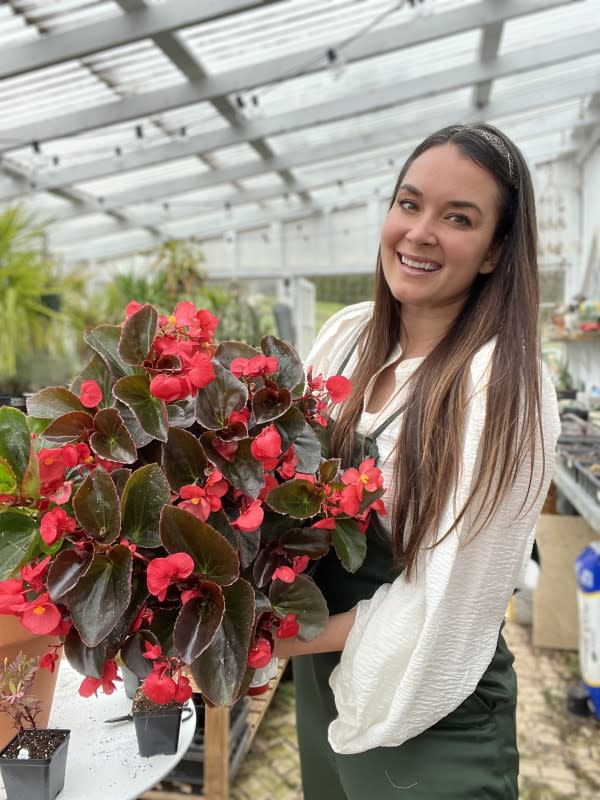
Courtesy Annette Thurmon
Thurman tells Parade that she loves to grow Begonias in pots for frequent blooms from spring until frost. They range in color from light pink to deep bright pinks, so you can light your garden up with pink!
Season: Spring to winter
Growing Conditions: Deadheading helps promote more blooms. They do best when watered at the roots into well-draining soil, and partial shade is best.
Size: 6-18 inches tall
9. Azalea
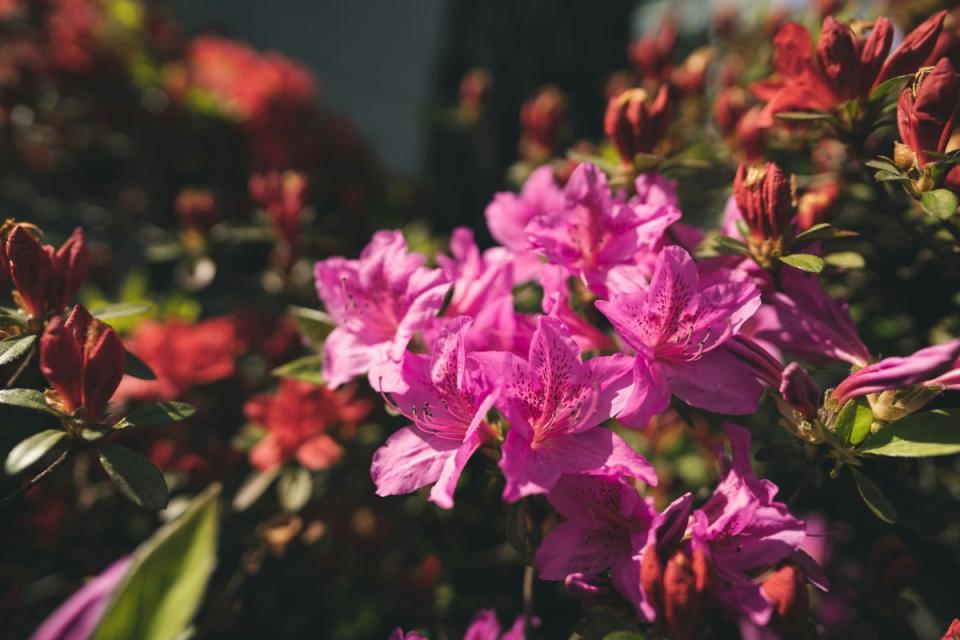
Unsplash
Azaleas are vibrant, colorful flowers that create a stunning display of blooms for your garden. There are many varieties of azaleas to choose from.
Season: Spring to early summer
Growing Conditions: They grow best in partial shade with acidic, well-drained soil.
Size: 2 to 8 feet tall
10. Tulip
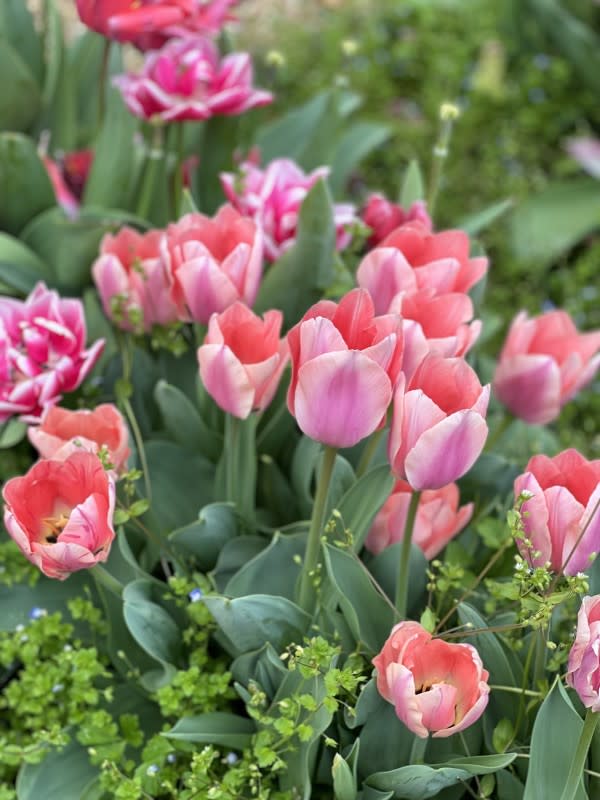
Courtesy Annette Thurmon
"Tulips are my favorite flower of spring!" Thurmon says.
She continues, "You’ll find they come in a wide variety of pink hues and textures. Bulbs are planted in the fall and will bloom in the spring. Bulbs may be left in the ground and will re-bloom the following season."
Season: Spring
Growing Conditions: They do well in full sun to partial shade and well-draining soil. Water the ground with the bulbs during periods of drought.
Size: 6-24 inches tall
11. Bleeding Heart
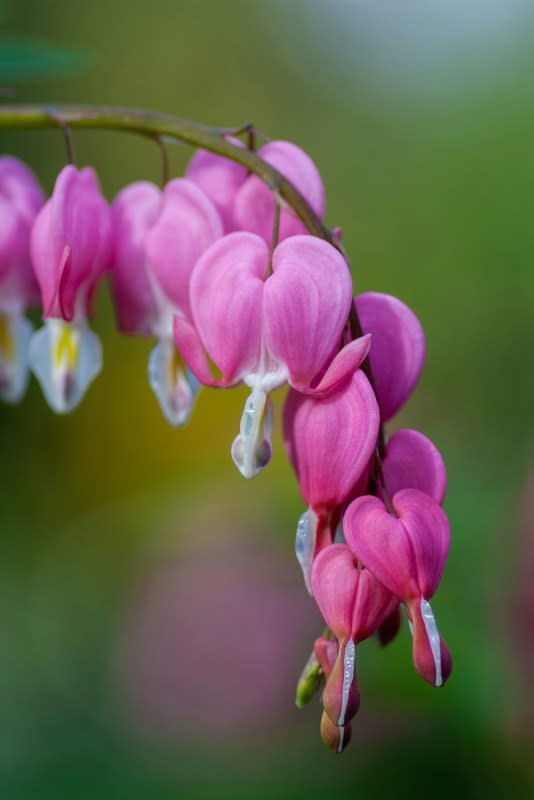
Unsplash
Bleeding hearts are a uniquely, heart-shaped flowers with a drop at the bottom which has inspired various folk names, like "lady-in-a-bath" and "lyre flower." These drooping, pink blooms make for a lovely addition to any garden.
Season: Late spring to early summer
Growing Conditions: Bleeding heart flowers thrive in partial to full shade with well-drained, moist soil.
Size: 2 to 3 feet tall
12. Sweet Pea
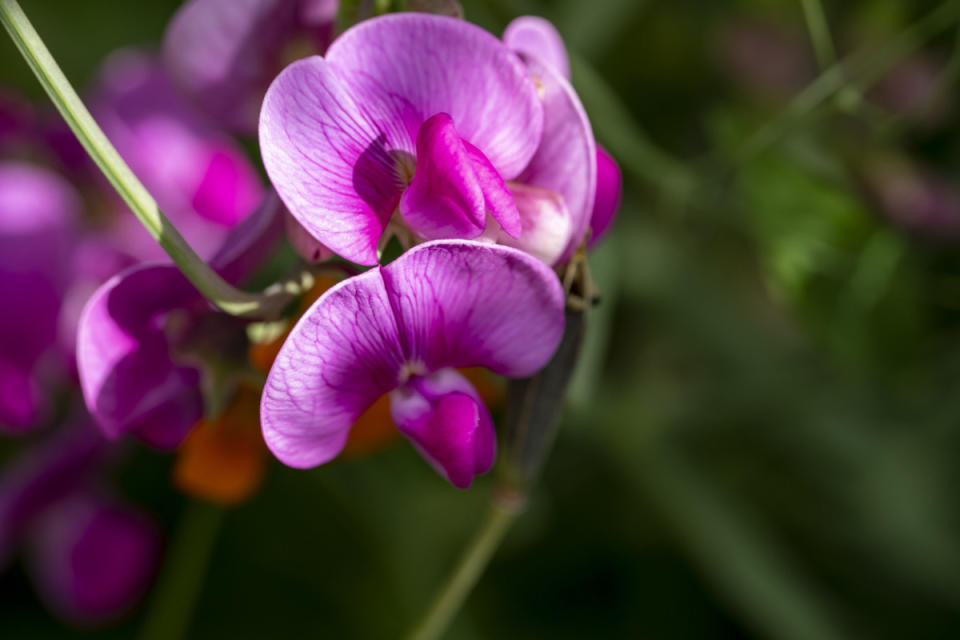
iStock
Sweet peas were first cultivated in the 17th century by a Sicilian monk named Francesco Cupani, who is credited with sending seeds to England and sparking their popularity in European gardens. Sweet peas have been one of the most popular pink flowers ever since!
Season: Late spring to early summer
Growing Conditions: Grow in full sun with rich, well-drained soil. They need at least six hours of direct sunlight daily to thrive.
Size: 4 to 6 feet tall
13. Carnation
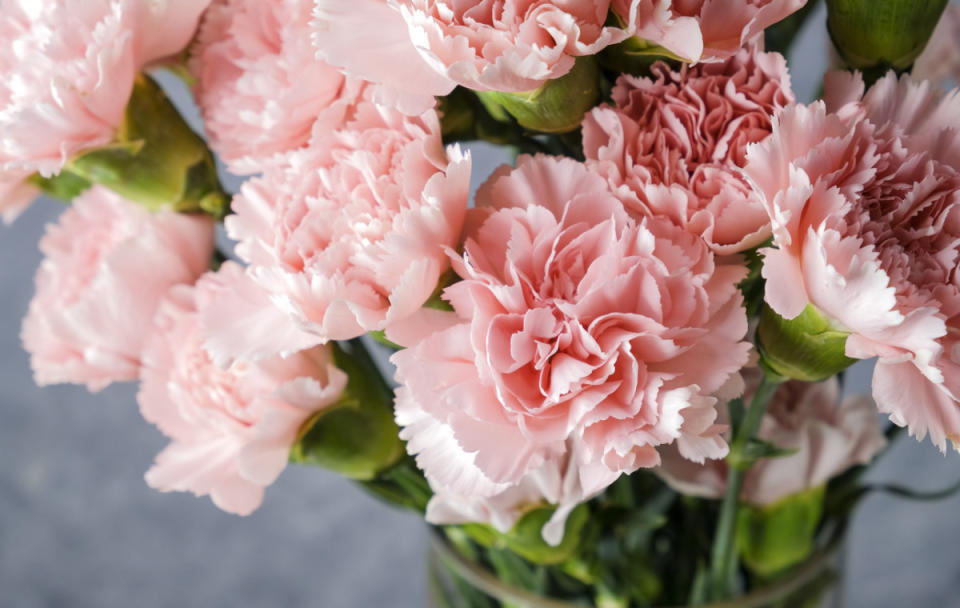
iStock
"Carnations have long been used in bouquets and come in a variety of pinks. Regular deadheading will help promote more blooms," Thurmon explains.
Season: Spring to summer
Growing Conditions: Plant in an area with full sun and well-draining soil.
Size: 1-3 feet tall
Related: The 35 Best Raised Garden Bed Ideas to Transform Your Outdoor Space
14. Snapdragon
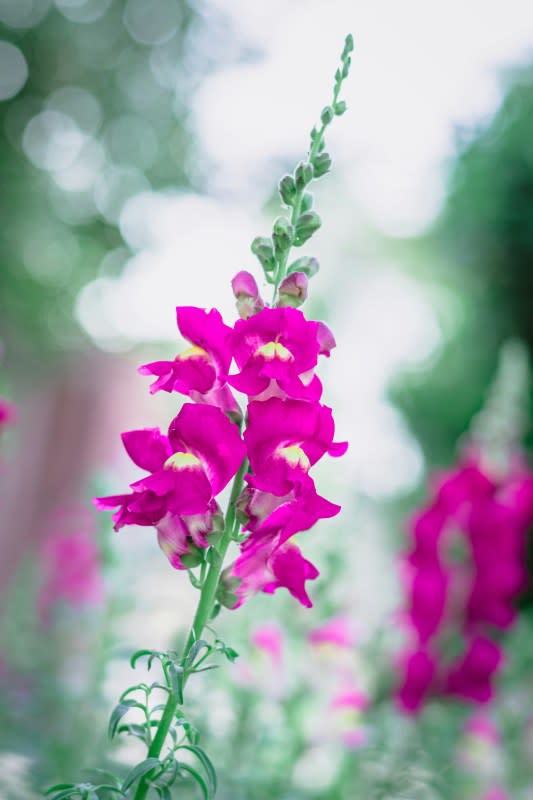
Unsplash
Thurmon describes snapdragons in three adjectives: beautiful, unique and whimsy. Their interesting shape brings a funky vibe to any garden space!
Season: Spring to fall
Growing Conditions: Plant in full sun and well-draining soil. Deadhead to encourage more blooms.
Size: 6-48 inches tall, depending on the variety.
15. Hibiscus
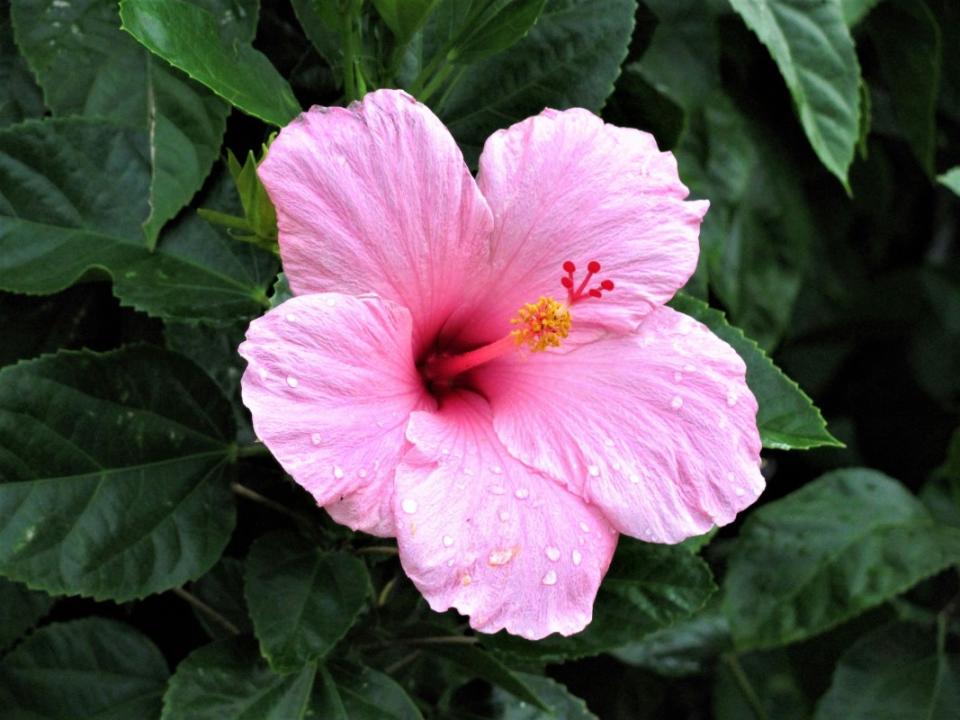
Unsplash
When you think of hibiscus flowers, you likely think of tropical vibes. Hibiscus boast large, vibrant blooms and are known for their striking colors and tropical flair.
Season: Late spring to early fall
Growing Conditions: Hibiscus prefer full sun but can tolerate light shade. They may need to be watered daily, and should be grown in well-drained, moist soil.
Size: 3 to 10 feet tall
16. Hydrangea
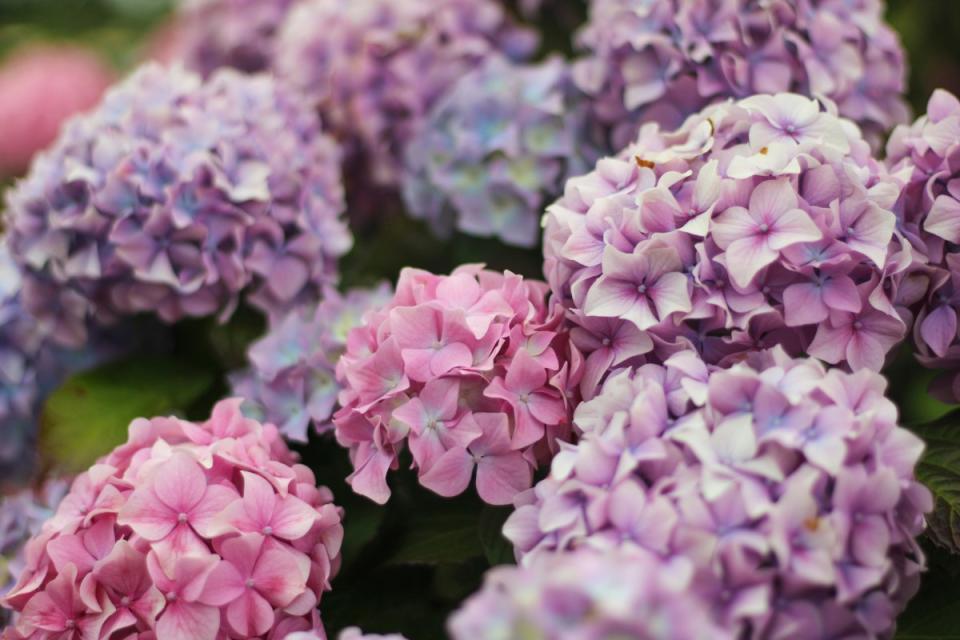
Unsplash
Every summer, hydrangeas bless us with their gorgeous blooms and come back year after year. Thurmon says that they are low maintenance to care for too! Mulch them well to keep the soil moist, and prune in winter to increase blooms.
Season: Summer
Growing Conditions: Plant in partial shade with well-draining soil.
Size: 3-6 feet tall
17. Anemone
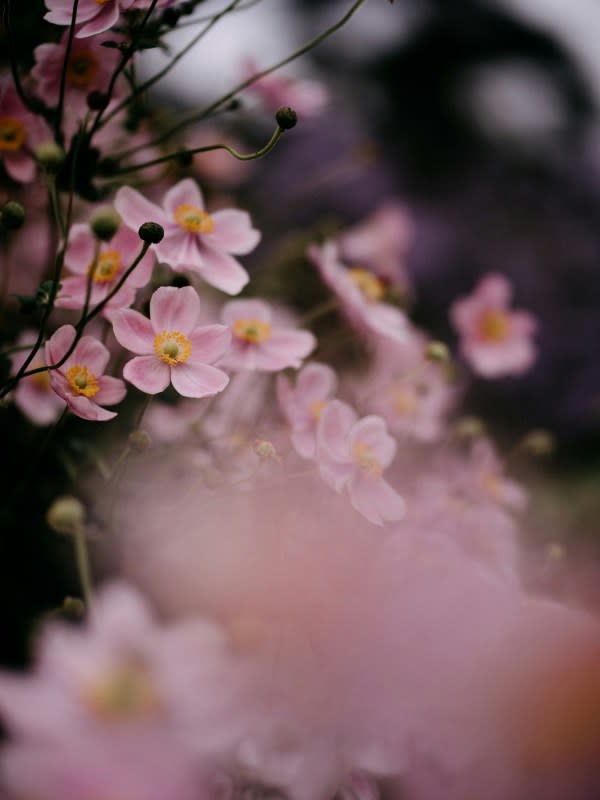
Unsplash
Anemones are beautiful blooms that come in all sorts of cheerful pink colors. Their bulbs can be planted in the fall and winter. Thurmon encourages green thumbs to mulch and fertilize as needed to help encourage more blooms. (A single bulb will bloom 10 to 20 flowers!)
Season: Early spring to fall
Growing Conditions: Morning sun and afternoon shade is best. Well-draining soil is essential.
Size: 15-20 inches tall
Related: 16 Edible Flowers
18. Petunia
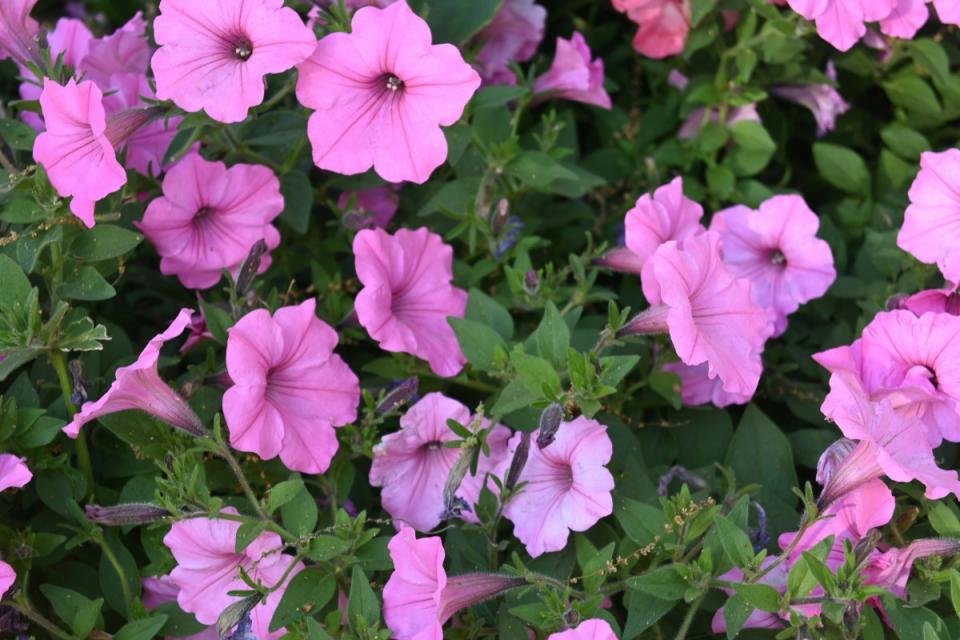
Unsplash
"Petunias are delicate flowers that do best with at least six hours of sunshine per day and well-draining soil. With proper care, you will enjoy blooms non-stop all season!" Thurmon explains.
Season: Spring to winter
Growing Conditions: Regular fertilizer, watering, and pruning will encourage plant health and more blooms.
Size: Some grow only 6 inches tall while others can grow up to a foot!
19. Cyclamen
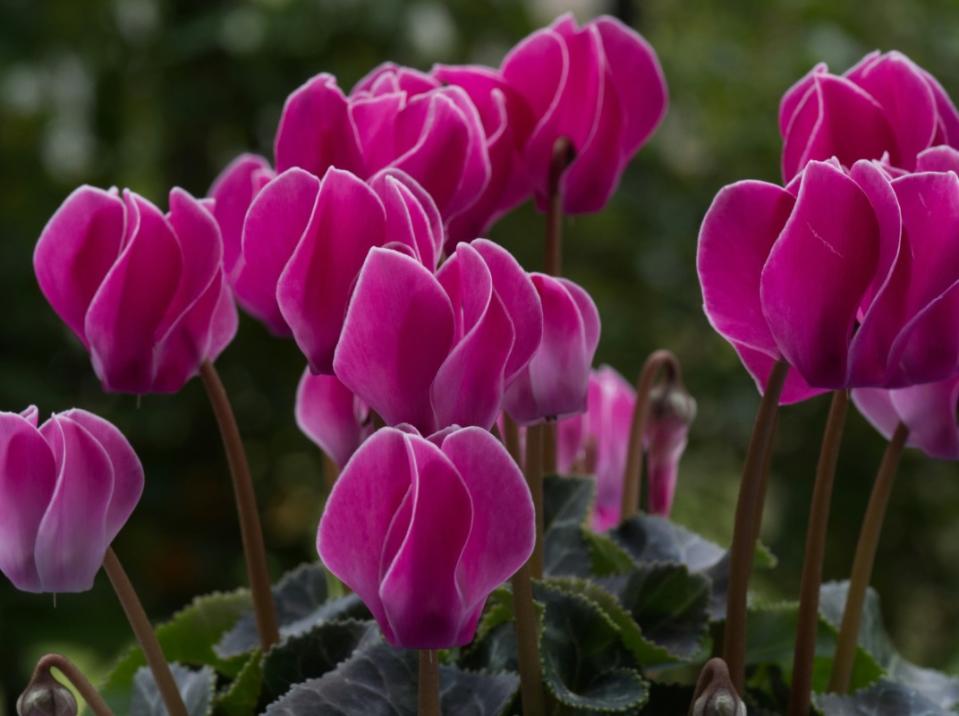
Unsplash
Cyclamen are charming pink flowers with upswept petals and heart-shaped leaves. Their tubers have been used historically in herbal medicine, believed to have various health benefits.
Season: Late fall to early spring
Growing Conditions: Cyclamens flourish in partial to full shade with well-drained, slightly acidic soil. They prefer cooler temperatures with high humidity.
Size: 6 to 12 inches tall
20. Geranium

Unsplash
Geraniums are versatile, colorful flowers with a long blooming season and natural insect-repelling properties. Not only do they add brightness to the garden, but it makes them a popular choice for garden borders and patio planters to help keep pests away.
Season: Spring to late fall
Growing Conditions: Geraniums are fairly easy to care for, and grow best in full sun to partial shade with well-drained soil.
Size: 1 to 3 feet tall and wide
21. Pansy
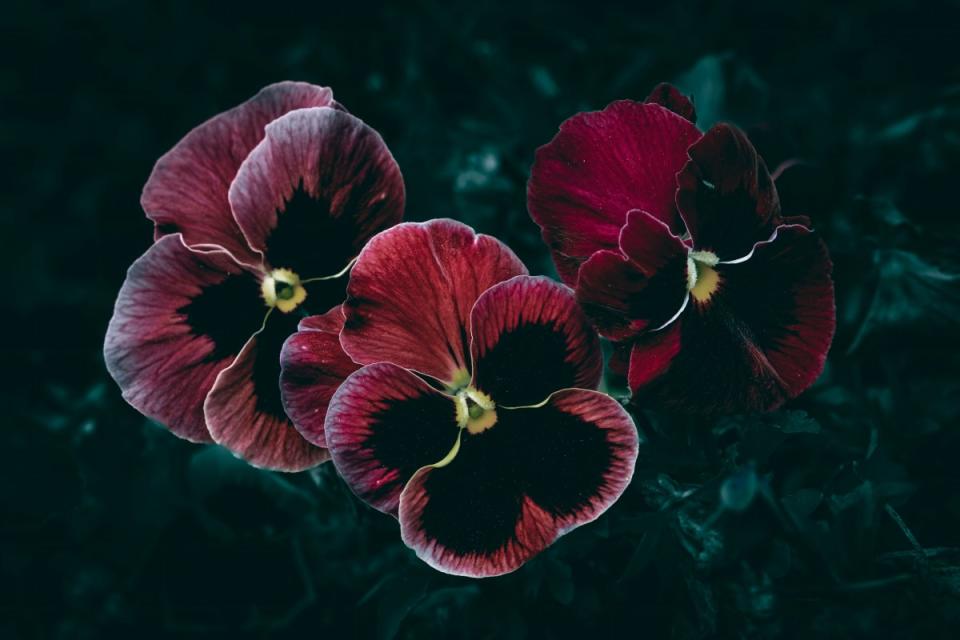
Unsplash
"Pansies are a popular pink flower, and a favorite of mine," Thurmon says. "They do best in spring, fall and are tolerant to light frosts which make them some of the best flowers to plant early in the spring."
Season: Spring to fall
Growing Conditions: They prefer full sun, but in hotter climates partial shade can help encourage blooms for longer. Keep soil moist and well-draining. Deadheading and pruning is always best to encourage more blooms.
Size: 6-12 inches tall
22. Creeping Phlox
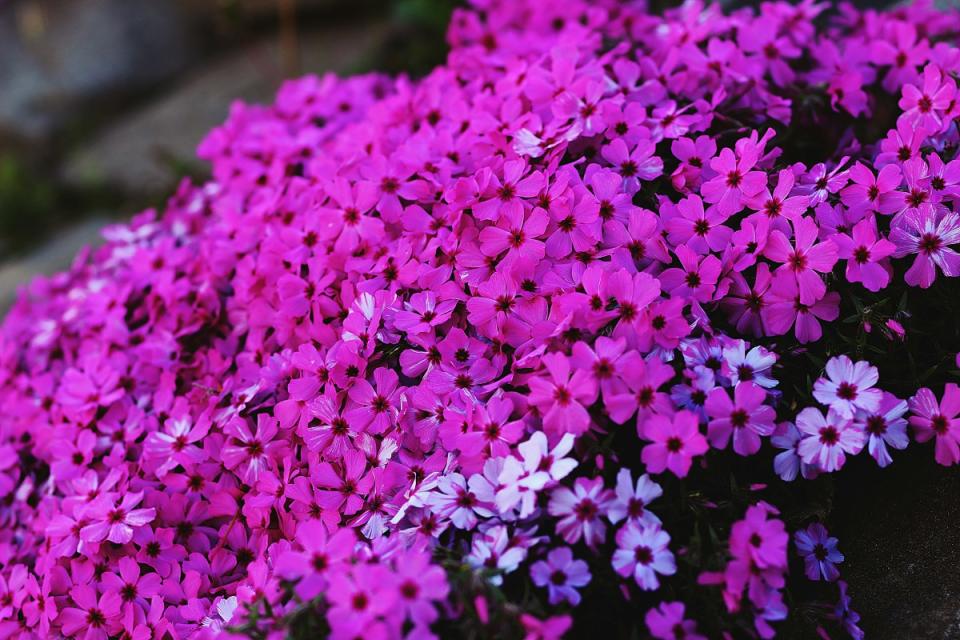
Unsplash
Creeping phlox forms a colorful carpet of flowers in early spring which are perfect for rock gardens or slopes, Thurmon explains. These pink flowers will come back reliably every season and attract pollinators with their fragrant blooms.
Season: Late spring to early summer
Growing Conditions: Plant in well-drained soil with full sun. Prune lightly after flowering to maintain shape and promote new growth.
Size: 4-6 inches tall, up to 2 feet wide
23. Foxglove
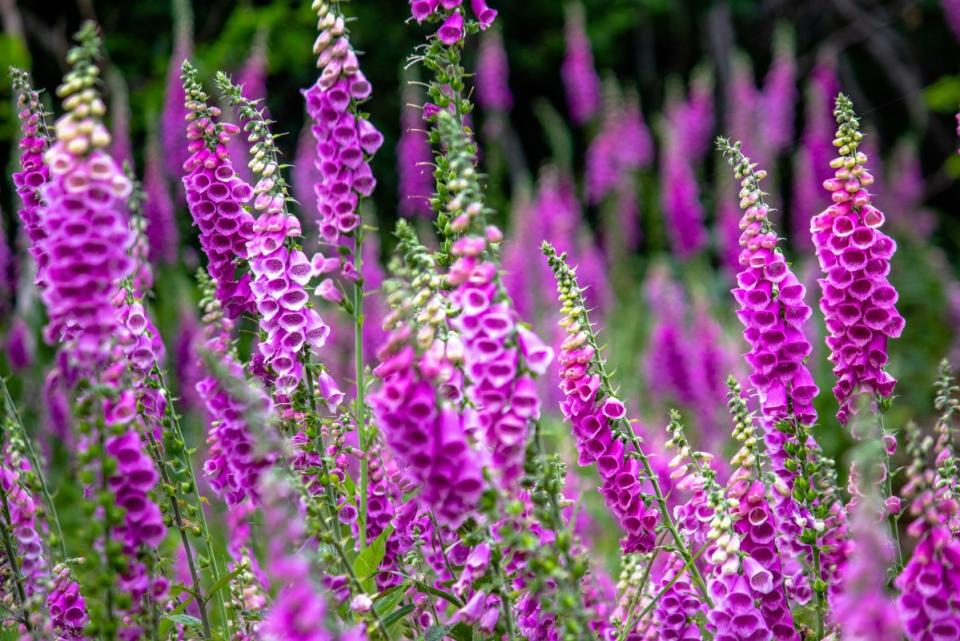
Unsplash
Talk about fun, fairy energy! Foxgloves are tall, majestic pink flowers with bell-shaped blooms that will surely add a touch of enchantment to your garden.
Season: Late spring to early summer
Growing Conditions: Foxgloves prefer partial shade with moist, well-drained soil. Taller flowers may need stalking to stay upright.
Size: 3 to 5 feet tall
24. Iris
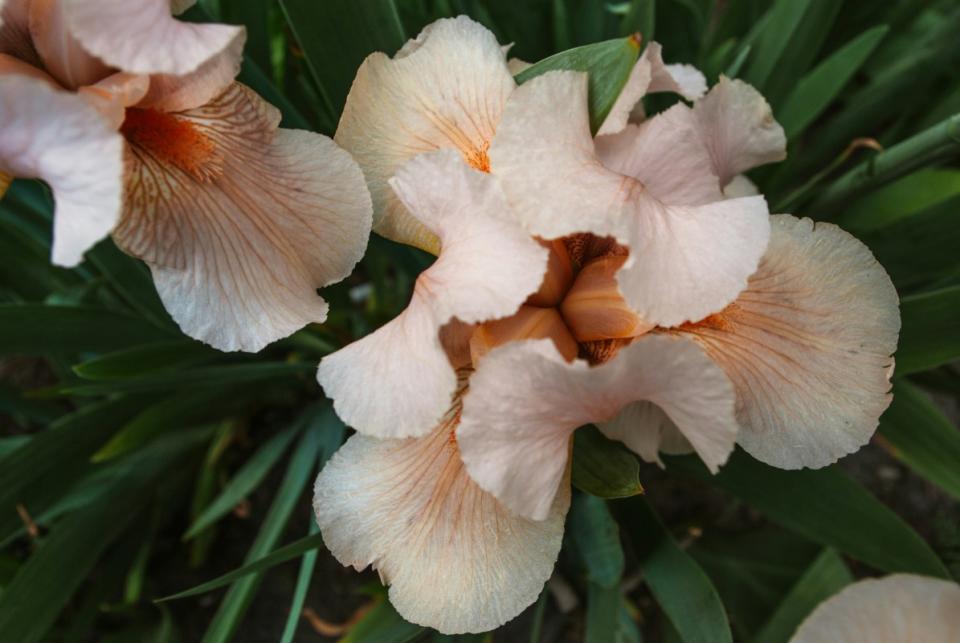
Unsplash
"Iris have beautiful dramatic flowers and work well for garden borders," Thurmon explains.
"They also multiply and come back year after year. Irises come in a variety of heights ranging from dwarf to tall—which means they can grow anywhere from 6 inches to 5 feet tall!" she adds.
Season: Late spring to early summer
Growing Conditions: Plant them in shallow soil and in an area with full sun.
Size: 6 inches–5 feet tall
Related: 28 Different Types of Orchids
25. Coneflower
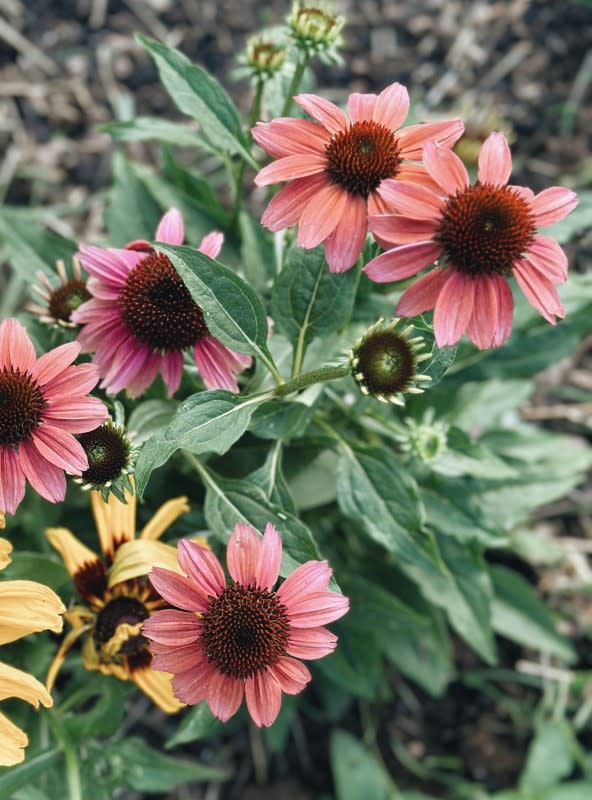
Courtesy Annette Thurmon
Coneflowers, also known as Echinacea, are resilient, daisy-like flowers with prominent, cone-shaped centers that attract pollinators. They have been traditionally used in Native American medicine for their potential immune-boosting properties and are still used in herbal remedies today.
Season: Mid-summer to early fall
Growing Conditions: Coneflowers love the sun. They need at least 4 hours of direct sunlight per day, but bloom best with 6-8 hours. Make sure to give them a shady spot!
Size: 2 to 5 feet tall
Next: What Is Your Birth Flower? Find Out the Meaning Behind the Blooms for Each Month
Source
Annette Thurmon is an author and founder of Azure Farm. Her most recent book, Simple Country Living, inspires you to live a simpler, happier life, no matter where you live. You can follow her social media channels @azurefarm, blog and listen weekly on the Happy Farmily Podcast.

 Yahoo Lifestyle
Yahoo Lifestyle 
